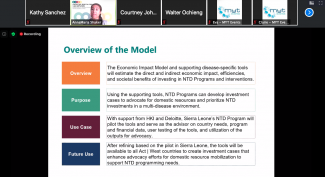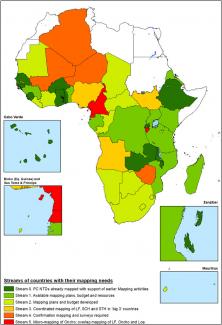Mapping is an essential element for each of the neglected tropical disease (NTD) programs advocated by the WHO.
Resources
Restarting Neglected Tropical Diseases Programs in West Africa during the COVID-19 Pandemic: Lessons Learned and Best Practices
In line with the WHO recommendations and guidance issued in April 2020, USAID advised Act | West to temporarily suspend NTD field activities.

Considerations for developing and deploying cost and economic impact models in the elimination/control of 5 PCT NTDs
The economic impact model and supporting disease-specific tools estimate the direct and indirect economic impact, efficiencies, and societal benefits of investing in NTD programs and interventions. The workshop will explain how NTD programs can use the supporting tools to develop investment cases to advocate for domestic resources and prioritize NTD investments in a multi-disease environment. It will also describe how, with support from HKI and Deloitte, Sierra Leone’s NTD program will pilot these tools and serve as the advisor on country needs, program and financial data, user testing of the tools, and utilization of the outputs for advocacy. After incorporating the feedback from the pilot in Sierra Leone, the Act | West team will make the tools available to all supported countries to create investment cases that enhance advocacy efforts for domestic resource mobilization for NTD programming.
Risk factors associated with failing pre-transmission assessment surveys (pre-TAS) in lymphatic filariasis elimination programs: Results of a multi-country analysis
This paper reports for the first time factors associated with pre-transmission assessment survey (pre-TAS) results from a multi-country analysis. This information can help countries more effectively forecast program activities, such as the potential need for more rounds of mass drug administration, and prioritize resources to ensure adequate coverage of all persons in areas at highest risk of failing pre-TAS.
